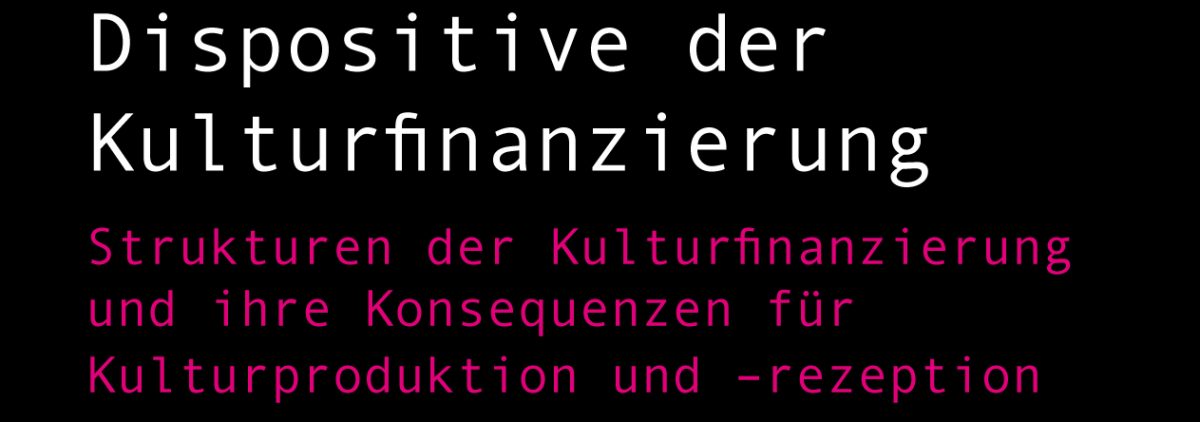Tell me more about Dispositions of Cultural Funding!
Conference Proceedings of the 8th annual meeting of the Professional Association for Cultural Management (16th – 18th January 2014)
What do you expect when you are travelling through the Alps in the middle of January? Snowy landscapes, an icy climate, and people involved in winter sports?
Neither – nor!
We, a small delegation from Salzburg, went to Kufstein (Tirol, Austria) to participate in the 8th annual meeting of the Professional Association for Cultural Management at the University for Applied Sciences.*3 *(3) The meeting explored the dispositions of cultural funding, thus examining and focusing on the interdependency of financial systems and the production of artistic processes and cultural goods as well as their reception. Also considered was the impact of theories of cultural management in these processes, in order to contemplate alternative and innovative models for financing. On the first day, the keynote speakers Thomas Heskia, Gernot Wolfram and Patrick S. Föhl, together with Doreen Götzky, provided fundamental theoretical input on different structural implications. In the subsequent workshops – one led by Martin Lücke and Carsten Winter – we learned more about currently applied strategies such as crowd funding. Guest speaker was Wolfgang Senges, co-founder of C3S – a collecting society operating on a fair and transparent level (see more on https://www.c3s.cc/at/) – and consultant for the development of digital business strategies for service providers specializing in music and media.
On the second day, the keynote speeches addressed international perspectives. Adelheid Mers presented her interview-based research, conducted by 3Arts in Chicago, which aims to approach evaluation in a different way and, as a consequence, attempt to “learn from the artists directly how they need to be supported“*1 *(1) (see more: http://3arts.org/). Ellen Loots questioned whether the Dutch and Flemish governments have developed an adequate and effective instrument for encouraging cultural entrepreneurship, especially in the performing and visual arts. In the course of this, she expressed valid doubts as to whether the government or the New Public Management system which focuses among other things on efficiency, effectiveness, and economy within the state administration, always has a rational effect on arts management. In this, she brought in the information that the arts lobby finds it difficult to provide the necessary support of the arts policy. As a result, discussion has shifted from proper state funding to technical agendas. This could further harm institutions that are dependent on public funding, as she presented with regard to the newly implemented income standard system.
Martin Tröndle’s final summary report was on a similarly negative note. He offered a critique of the meeting, as he felt that the term Dispositions/Dispositif (from Michele Foucault) had been left out. According to Giorgio Agamben, however, the term Dispositions/Dispositif includes anything as it means a heterogeneous entity.*2 *(2) But this leads me to ask: “What does a heterogeneous entity of Cultural Funding include?” Crowdfunding? Public funding? Artists? Production costs? Management structures? Market and economy? All of these keywords were mentioned at the meeting. Nevertheless, by following this approach it is not possible to either complete the list or include every aspect. At the same time, it is possible to creatively and innovatively examine a vast number of perspectives for finding new ways to finance cultural productions. And my personal motto from the meeting, “Try to be open-minded, attentive, and creative when it comes to cultural funding.”
Therefore, I am able to say that this meeting was informative and inspiring; at the same time it raises a number of further questions regarding one basic aspect of cultural production – namely, cultural funding. If you are interested in learning more about these dispositions, the next Yearbook of Cultural Management which is expected to be published by the end of summer will contain the protocol of the meeting, as well as other interesting articles.*4 *(4)
Julia Jung ( 2014): Tell me more about Dispositions of Cultural Funding!. Conference Proceedings of the 8th annual meeting of the Professional Association for Cultural Management (16th - 18th January 2014) . In: p/art/icipate – Kultur aktiv gestalten # 04 , https://www.p-art-icipate.net/tell-me-more-about-dispositions-of-cultural-funding/

